The Best Board Games of 2024
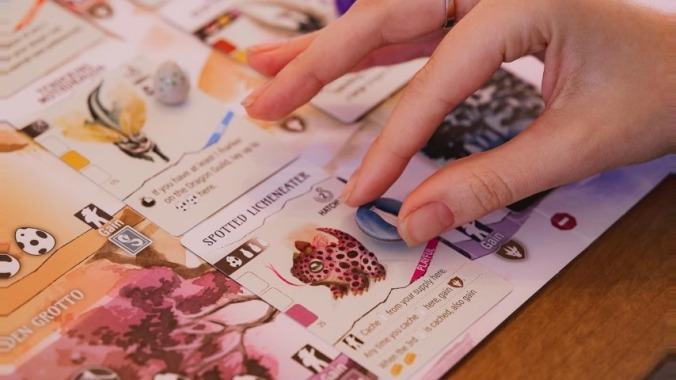
I think 2024 might be the best year for new board games I’ve seen, and this was certainly the toughest year for me to cut down my year-end rankings to just 10 titles. (I said something similar last year, so I may just have a hard time with this process, period.) It was a big year by any measure, though, with Gen Con setting yet another attendance record with over 71,000 people converging on downtown Indianapolis, and what at least seemed like more games from more publishers than I can remember seeing in past years. I did the thing, though, breaking it down to my 10 favorite new games of 2024. I’ve only considered games that were available for purchase in the United States before December 1, 2024, so the tremendous game Flatiron (only available in Europe at the moment) isn’t here. These games are all new titles as well, meaning that I didn’t consider games that are reissues or reprints of games that have been available before, the best one of which this year was Trio from Happy Camper, which is in my all-time top 20. There were also plenty of promising and interesting games released this year that I haven’t played yet, including Creature Caravan, Fromage, and the Cascadia Rolling Hills/Rivers roll-and-writes, to name just a few. I am just one man, standing before his Shelf of Shame, looking for more time to do the important things in life, like playing more board games.
10. Tower Up
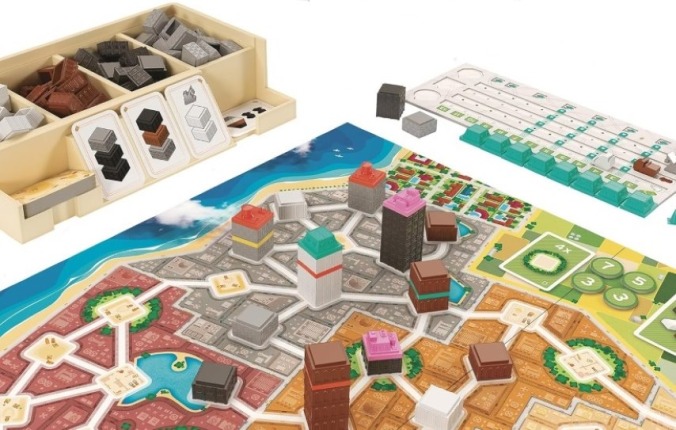
Tower Up is so simple yet so competitive that it manages to bring something new to the crowded city-building theme even though players have just two possible actions on each turn. You can either place a tower piece on an empty space on the board, which requires you to place another piece on every tower on an adjacent space (matching each tower’s color); or you can take a card and collect the tower pieces shown on it to add to your supply. You score at game-end for how far you’ve advanced on the tracks for each of the four tower colors and for how many of your roofs are on top of buildings at the end of your final turn, plus the three objective cards for that game if you’ve achieved any—and that’s it. It’s easy to teach, pretty quick to play, and looks great on the table once it’s done.
9. Nova Roma
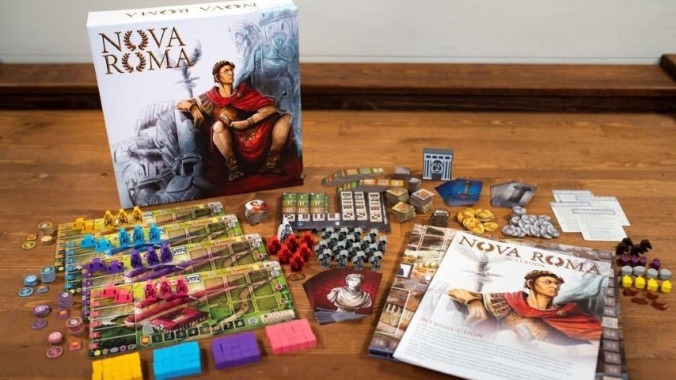
The best new complex game I played this year, Nova Roma is a big worker-placement game with several ‘mini-games’ on the board that involve area control, hand management, and even a little chariot race. The game’s action-selection mechanic is the real gem here, as players place their workers on a grid, taking the action of that space’s row and column, but actions become more powerful if the player has more of their own workers in that row/column already. This means taking the same action repeatedly can become very powerful, but the game’s design also ensures that you can’t just lean into one thing and run away with it. Fortunately there’s no tie-in to Megalopolis. (Full review)
8. Nocturne
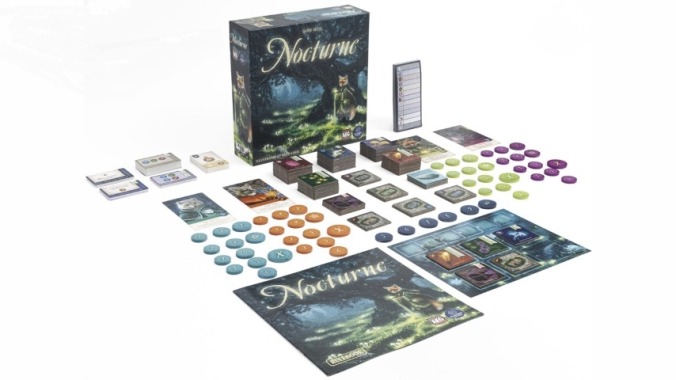
Nocturne shines for one main reason: the clever way in which it has players select tiles in each round. Players have bidding tokens they’ll place on tiles on the central tableau by placing a higher token on an adjacent tile to wherever the last player went; if you win a tile, you’ve spent that token for the round and take the tile to your area, but if you bid and lose, you can still gain something by moving that token to the ‘forest sprites’ board, which has extra tiles you might be able to claim at the end of the round. Because you have to bid on adjacent tiles, once some tiles are removed, there are empty spaces that become obstacles, so you may be able to manipulate the bidding to secure a tile for yourself with a low token—or even ‘corner cast’ and get a tile for free because there’s nothing left next to it. The game takes two rounds, with some small objective cards, but the heart of the game is the scoring of all of the tiles, which have a point salad-y feel with lots of different ways to rack up points. The art, by the great Beth Sobel, is also extremely appealing. (Full review)
7. The Gang
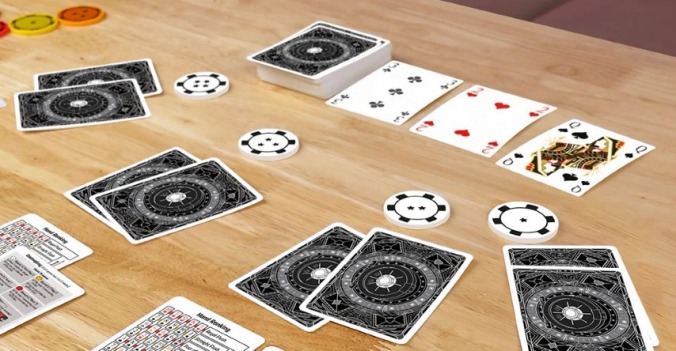
The Gang is a cooperative game based on Texas Hold ‘Em, where players have to figure out the relative rankings of their hands without communicating in any way. Players are dealt two cards that they keep hidden (pocket cards), taking tokens to indicate where they think their hands will rank when the five cards are on the table. The same process takes place after the flop and turn, but it’s the tokens taken after the river that matter: once everyone has settled on their tokens, players reveal their pocket cards, starting with whoever has the lowest token. If all players’ hands are ranked correctly, you win the round; to win the game you must win three rounds out of five. It’s more difficult than it looks, and very, very fun. If you like The Crew or The Mind, you’ll probably like The Gang as well. (Full review)
6. Faraway
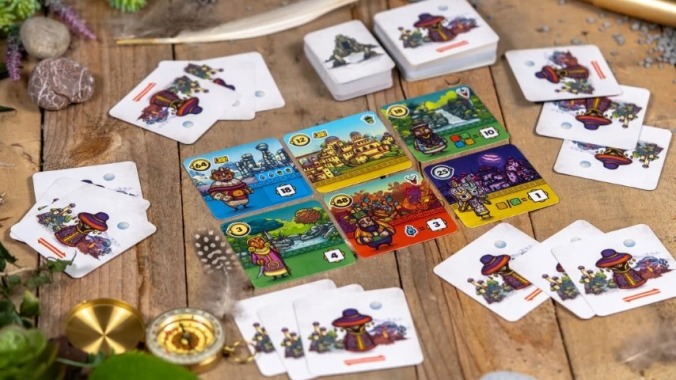
Faraway comes from designer Johannes Goupy, who’s had a string of very good to great games over the last three years, including Rauha, Pixies, and Orichalcum, with this one his best to date. It’s a simple card-based game that gives you a big brain-twister, as you acquire eight cards over the course of the game, one per round, placing them in a row in front of you in the order in which you took them. After the final round, you flip all your cards face down, then reveal them one at a time in reverse order. Because most cards require that you have certain symbols visible when you score them, you have to think in reverse, and will nearly always acquire a card before you get the right combination of symbols to score it. There’s some luck of the draw here, but the game has some other mechanics to help balance that out, so pursuing a firm strategy works if you can handle the game’s cognitive load. It’s also surprisingly quick for a game of its depth, playing in about 20-25 minutes. (Full review)
5. French Quarter
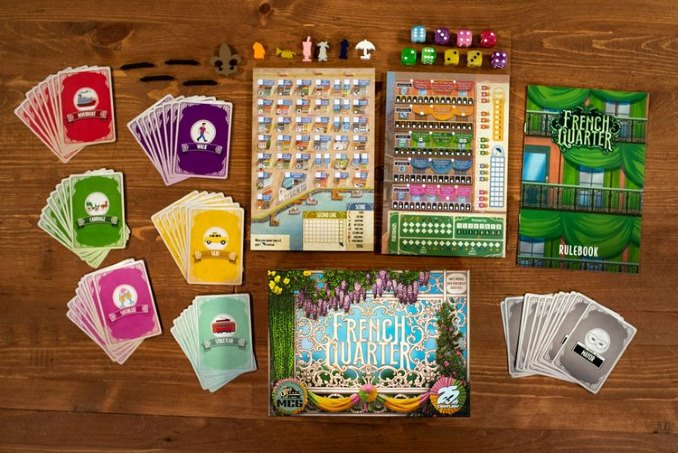
French Quarter is the best roll-and-write game I played this year, not surprising as it’s from the designers of the wonderful roll-and-writes Three Sisters and Fleet: The Dice Game. In French Quarter, players will draft dice each round to move themselves around a map pf that infamous district of New Orleans, advancing along various tracks representing five specific streets that will also give various bonuses as you progress—except for Bourbon Street, which can cost you points as you stumble along. As with this design team’s other games, there are only a handful of rounds, so you have to be efficient with your choices, chaining bonuses every time you get the opportunity, and games run pretty quickly too. Plus the art is bright and fun. (Full review)
4. Little Alchemists
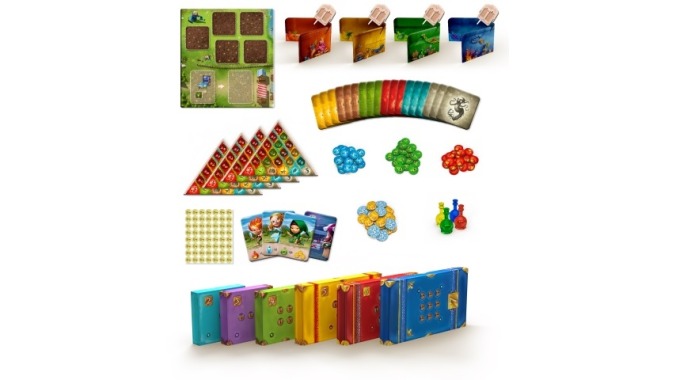
Little Alchemists starts out as a kids’ version of the heavy, two-hour game Alchemists, but by the time you complete the seven-scenario sequence, you’ve got a solid family-level deduction game that is playable by anyone ages 10 and up and takes less than an hour. In Little Alchemists, players will try to combine ingredients to see what potions they make, using the game’s app to scan the ingredient tiles they choose, and then use their powers of deduction to figure out what three potions each ingredient can make. The game starts out with six ingredients and just three potion types, but those will expand as you move through the scenarios, and you’ll also add artifact cards to the mix, giving you extra in-game powers or more points for game end. You get the most points for successfully proving a theory about what three potions an ingredient can make, and can gain a point if you can guess what someone else proved once they’ve checked it in the app. It’s highly addictive, and I love the way it scaffolds younger players up to a meaty midweight game by the end. (Full review)
3. Wyrmspan
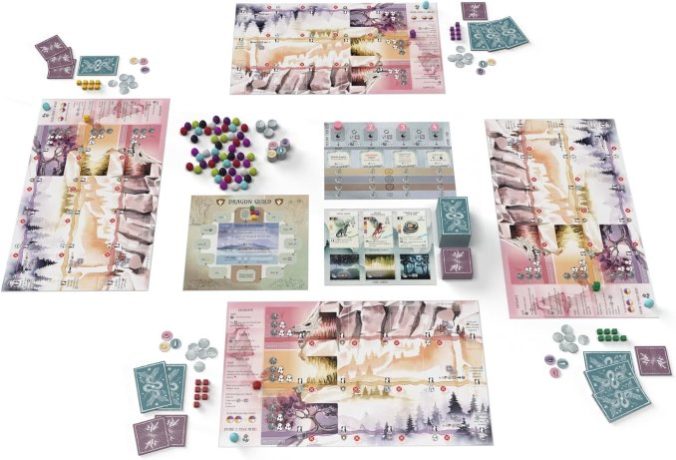
Wyrmspan is Wingspan Plus—it’s a retheme with a few core rule changes that make the game different enough to consider it a new release and to make it a touch more complex than the original. The board looks much like Wingspan’s, with three rows for different habitats, and there are still eggs and food to deal with. Where Wingspan was about birds, however, Wyrmspan is about dragons, and this time you have to play cave cards to give your dragons a place to nest, and have to excavate spaces past the first three in each row to play there. You also don’t have the Wingspan constraint of one fewer turn in each round, and can even get bonus turns through certain cards. If you like Wingspan and want a slightly bigger challenge, Wyrmspan is exactly the game for you—but I would say if you don’t enjoy Wingspan you’re not going to like Wyrmspan any more. (Full review)
2. Rock Hard 1977
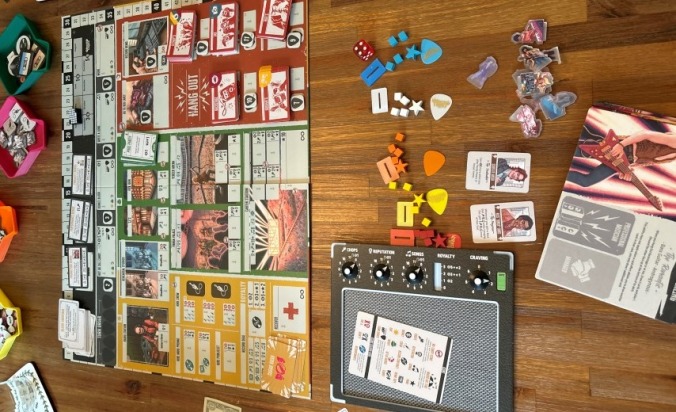
Jackie Fuchs was the bassist for the rock band The Runaways in the 1970s, alongside Joan Jett and Lita Ford, but left the industry to go to Harvard Law School, working as an entertainment lawyer and later winning Jeopardy! multiple times. She brought out her first board game this year, taking her experiences in the music world to the tabletop in this incredibly thematic worker-placement game where players have to work morning, evening, and at night to record a demo, get publicity, play gigs for cash, and try to eventually sign a record deal. The “candy” tokens that let you get an extra action in a day, but can eventually lead to a crash if you take too much, are a nice touch as well. (Full review)
1. Let’s Go to Japan
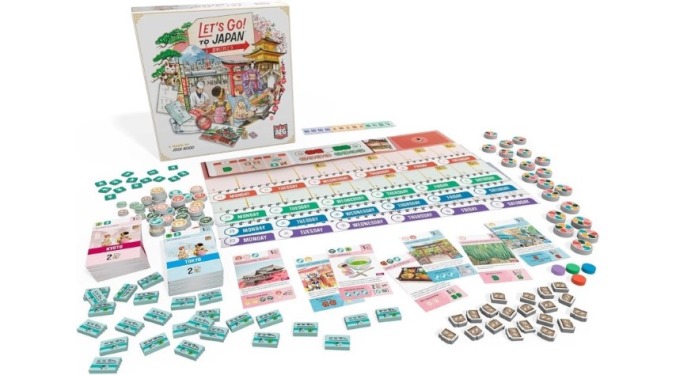
I went back and forth on this for the last three months, debating this game versus Rock Hard 1977, and I don’t think there’s a wrong choice here. I ended up with Let’s Go to Japan at the top because it’s going to appeal to a broader audience—it’s still a rich, challenging game, but easier to teach and to bring to the table with a mixed group of gamers and non-gamers. Designer Josh Wood (Santa Monica, Cat Lady) made the game when his long-planned trip to Japan was postponed indefinitely by the COVID-19 pandemic, turning his extensive notes and itineraries into a tabletop experience where players try to plan the best trip to Tokyo and Kyoto, visiting as many sites as they can in certain categories while managing their train travel between the two cities. You can also boost your mood with more relaxing sites, or risk overdoing it by packing too much into your six days. The art and flavor text are also fantastic, and as someone who’s never been to Japan but is dying to go, I learned quite a bit from playing that I’ll use to eventually plan my own trip. It’s the best game of one of the best years for new games I’ve seen since I started in this hobby over a decade ago. (Full review) Honorable mentions: Dracula vs. Van Helsing, Harvest, Gnome Hollow, Castle Combo.
Keith Law is the author of The Inside Game and Smart Baseball and a senior baseball writer for The Athletic. You can find his personal blog the dish, covering games, literature, and more, at meadowparty.com/blog.